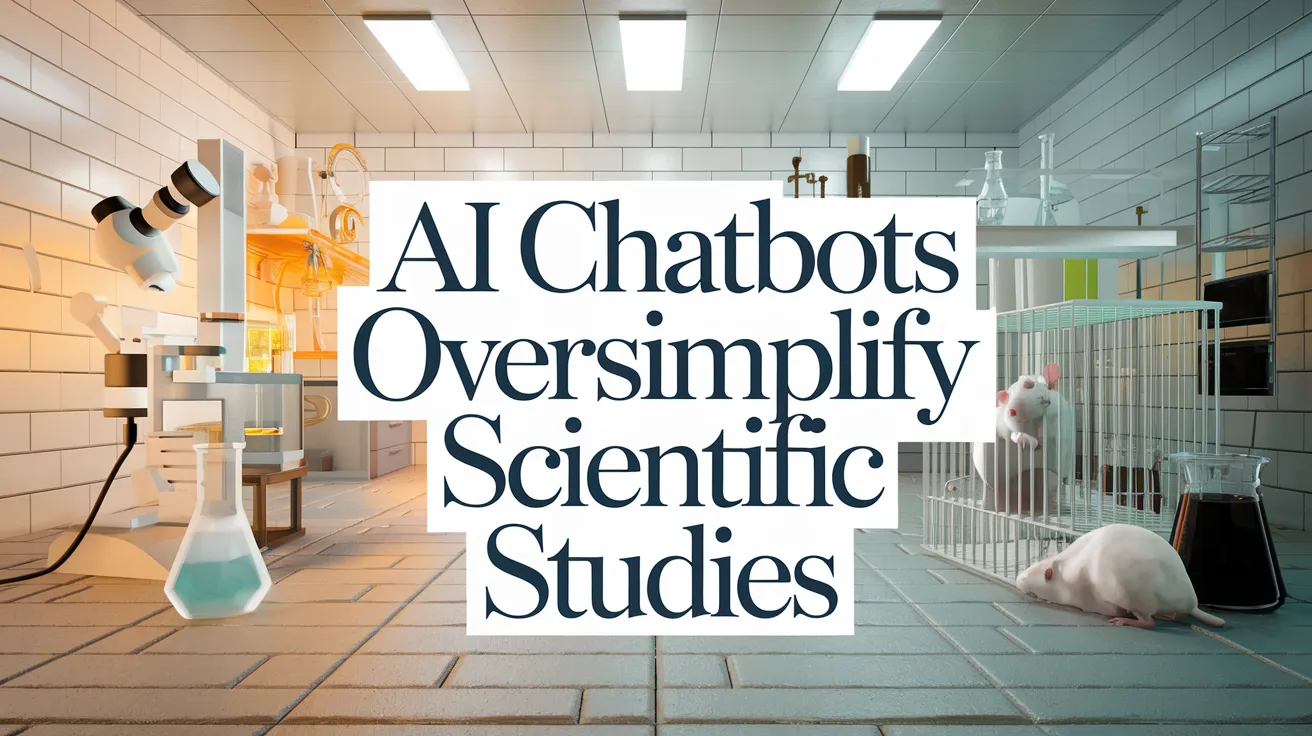AI Chatbots Oversimplify Scientific Studies

Recent research raises important concerns regarding the performance of large language models (LLMs), indicating that newer versions of AI chatbots, including ChatGPT and Llama, are increasingly likely to oversimplify or misrepresent critical scientific and medical findings. Conducted by researchers and published in April in the journal Royal Society Open Science, the study analyzed 4,900 summaries to uncover that these chatbots were five times more prone to oversimplification than human experts.
One significant finding was that chatbots responding to prompts designed for accuracy were twice as likely to generalize findings inaccurately compared to when given simpler summary requests. This suggests that while aims for simple summaries may seem harmless, they can inadvertently distort the original research’s intent. Uwe Peters, a postdoctoral researcher at the University of Bonn, highlighted the systematic methods developed to detect when models generalize beyond warranted limits.
Analogous to a photocopier failing to replicate its source effectively, LLMs process information through layers that can obscure essential nuances, especially in scientific contexts. As Peters noted, generalizations could seem benign until they distort the actual research findings. The study revealed that earlier chatbot models tended to avoid complex questions, while their newer counterparts tend to offer misleading yet authoritative-sounding answers.
For instance, the chatbot DeepSeek mistakenly presented a medical recommendation by altering the phrase “was safe and could be performed successfully” to “is a safe and effective treatment option.” Such overgeneralizations muddy medical judgments, risking dangerous prescription practices if used in clinical scenarios.
Researchers set out to address three questions across ten popular LLMs, including several versions of ChatGPT and Llama, observing that apart from the Claude model—all others were significantly more likely to produce distorted summaries. Overall, LLMs were almost five times likelier than humans to draw generalized conclusions, particularly when translating quantified data into broad claims, which may lead to unsafe treatment recommendations.
Experts like Max Rollwage, vice president of AI and research at Limbic, stress the subtle biases stemming from the scope inflation in AI outputs. As AI-assisted summarization becomes entrenched in medical workflows, addressing these biases becomes paramount for ensuring the fidelity of information aligned to original research. He advocates for the implementation of strict oversight measures to prevent oversimplifications from altering scientific integrity.
While the study’s framework is thorough, its authors acknowledge the necessity for expanded research that incorporates various scientific tasks and languages. There is also a call for refining prompt engineering techniques to enhance results on testing accuracy. Peters expressed concern regarding the growing dependency on chatbots, underscoring the looming risk of widespread misinterpretation of scientific results, particularly as public trust and scientific literacy are already under strain.
Moreover, Patricia Thaine, co-founder of Private AI, emphasized that fundamental misuses arise from applying general-purpose models to specialized domains without expert supervision, highlighting the need for task-specific training. This could further compound potential misunderstandings of complex fields like science due to oversimplifications inherent in the models’ training datasets.
The discussion around the accurate portrayal of scientific work in chatbot outputs is crucial, as it not only reflects the reliability of the models used but also the ethics surrounding AI in interpreting and disseminating scientific information.